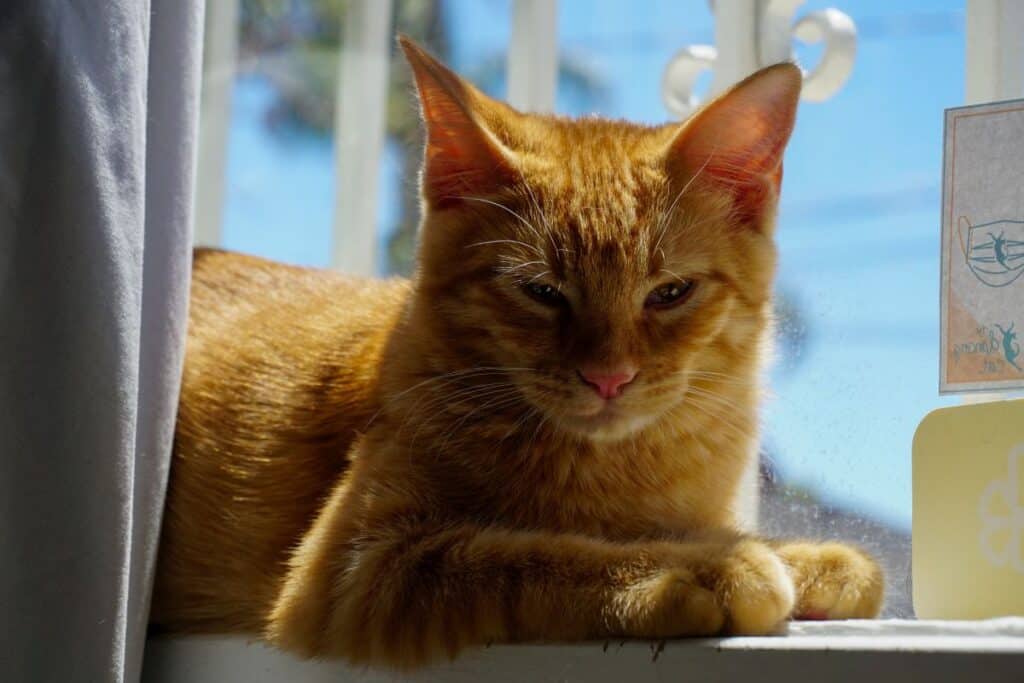Orange tabby cats, also known as ginger cats or marmalade cats, are distinguished by their orange or reddish coat of fur. Phaeomelanin (red pigment) entirely replaces eumelanin (black or brown pigment) in cats with orange fur.
Orange tabbies are not a cat breed
“Tabby” is not a breed of cat but a coat pattern. This pattern can occur in many different breeds, including Maine Coons, Persians, American short hairs, and British short hairs.
The word “tabby” comes from the French “tabis,” which means “a rich, watered silk.” It eventually became associated with cats because the pattern on their coat is similar to the wavy lines in watered silk.
Orange tabbies simply have this pattern in an orange, red, ginger, or marmalade color.
There are No Solid Colored Orange Cats
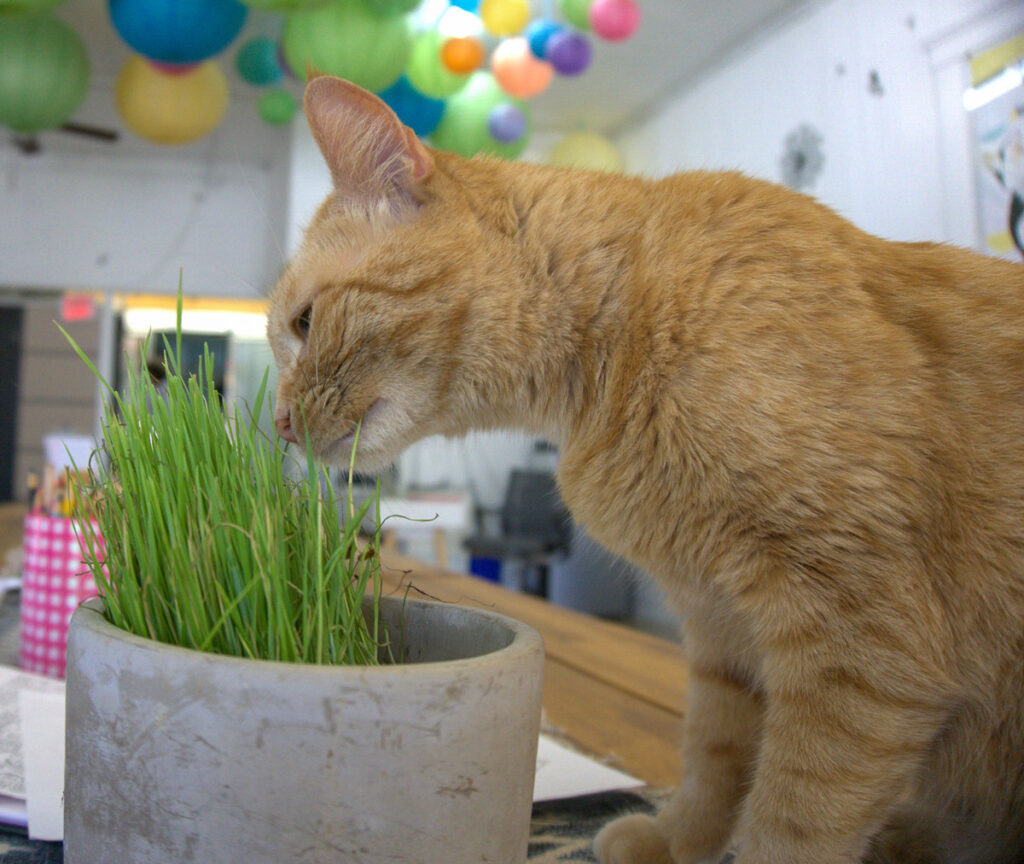
All orange cats are tabbies. Tabbies are not a breed of cat but a type of coat marking found in many domestic cats. A tabby cat has an ‘M’ shaped marking on its forehead, stripes around its eyes and across its face, stripes down its back, and stripes around its legs and tail.
Dilute Orange Tabbies
“Dilute” is a term used in genetics to describe a lighter or “watered-down” version of a stronger or darker color. When we’re talking about dilute orange tabbies, we’re usually referring to cats that carry a gene that “dilutes” or lightens the normal deep orange or red color to a softer, paler shade.
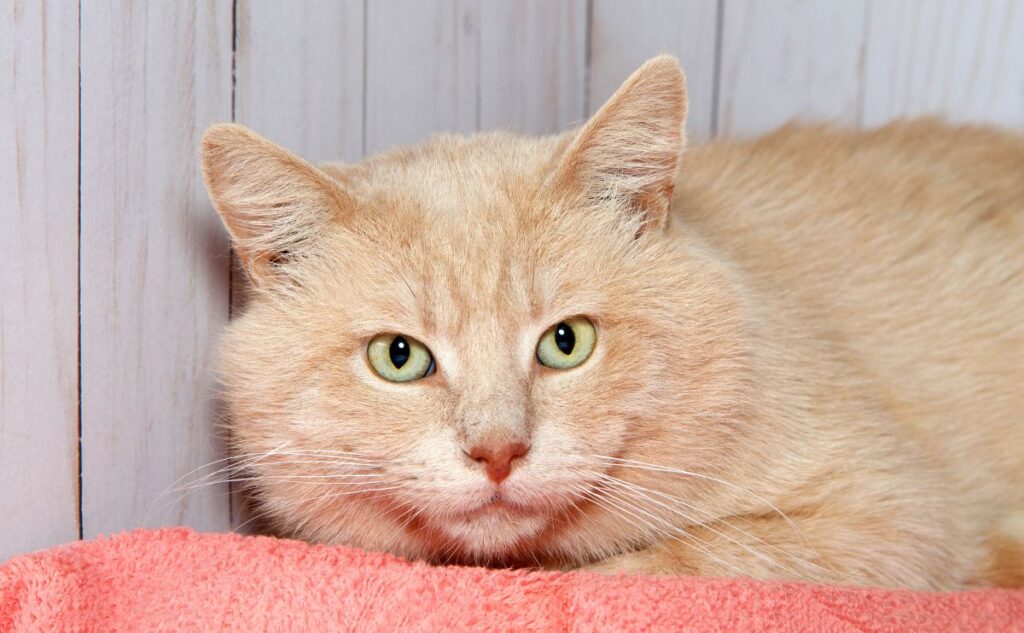
A dilute orange tabby is often called a “cream” or “buff” tabby. Instead of the vibrant orange or ginger color, these cats have a pale cream or light beige coat color. The tabby markings are usually the same color but can be slightly darker or lighter.
The dilute gene is recessive, meaning a cat needs to inherit it from both parents to show the diluted colors. This is why you may see an orange tabby in a litter with a cream sibling – both kittens inherited the gene for orange color, but only the cream kitten got the dilute gene from both parents.
Video: All orange cats are tabbies
The four coat patterns of an orange tabby cat
There are four different coat patterns that tabbies exhibit:
- The Tiger is another name for the Mackerel Tabby, which has stripes along the side.
- The Classic Tabby has strong, swirling markings.
- The Spotted Tabby has both large and small spots, which often resemble broken stripes.
- The Ticked Tabby has alternative light and dark body markings, and will have tabby facial markings on her face.
Orange cats can vary in the hue of orange with some producing a deep reddish orange coat and other orange cats sporting lighter yellow to orange colors. Breeders refer to orange cats as red cats.

Why are Most Orange Tabby Cats Male?
When you come across an orange tabby, more often than not, it will be a male. The reason why is that the gene for whether or not a cat has an orange coat is found on the X chromosome. Male cats, with only one X chromosome can either be orange or non-orange.
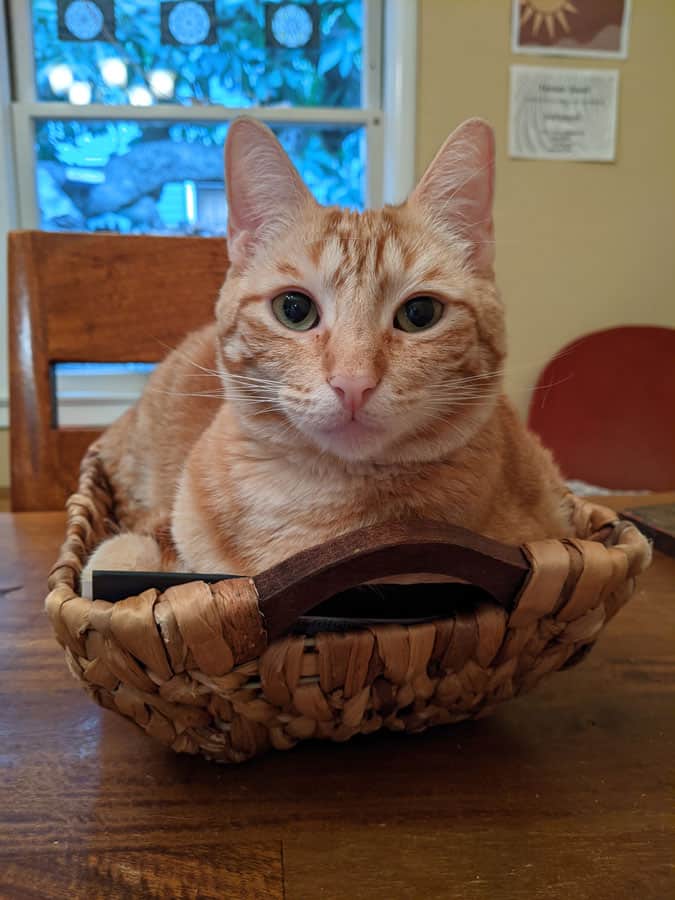
The orange allele is O and the non-orange is o. Female cats need O alleles on both X chromosomes to exhibit orange coats. OO produces orange fur in female cats, oo produces black or brown fur, and Oo produces a tortoiseshell cat with orange fur in some spots and non-orange fur in others.
As a result of how this gene expresses itself, the majority of ginger cats are male.
Are Orange Cats More Friendly Than Other Cats?
A common perception is that orange cats are friendlier than other cats. While some orange cat owners will swear by how affectionate their cats are, other owners are just as likely to offer stories about proclaiming their ginger cats are quite so cuddly.
The perceived friendliness of orange tabbies may be partly due to the overwhelming male gender of these cats. One study found that male cats tend to be slightly more affectionate than female cats but research has not proven that orange cats, specifically, are more affectionate than other cats.
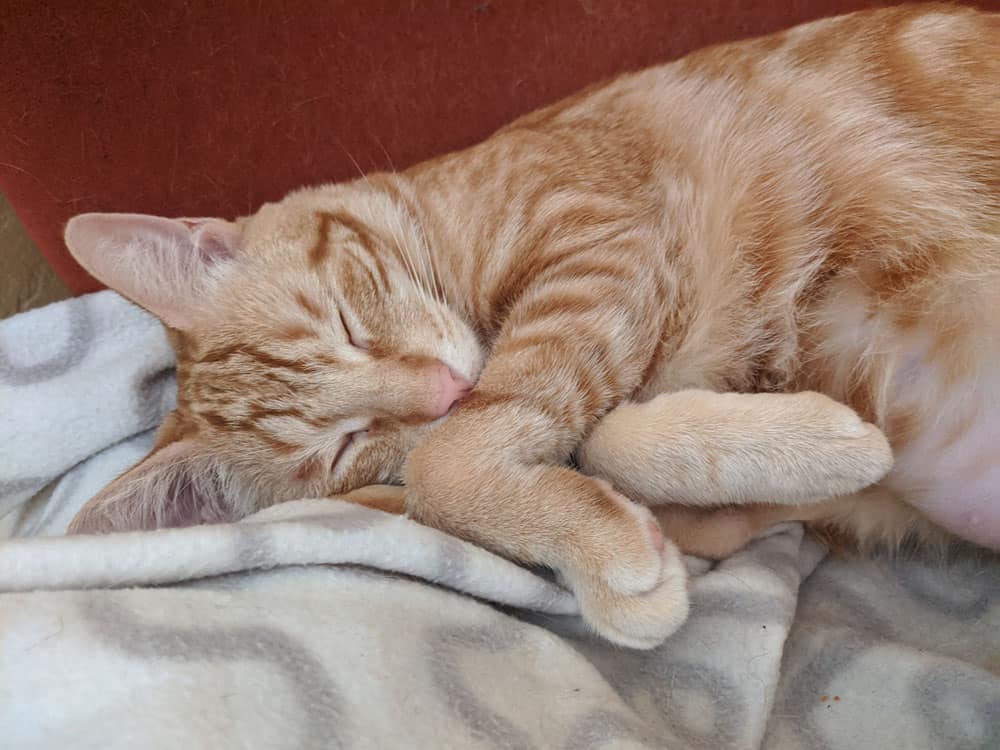
Other anecdotal beliefs about orange tabbies are that they are talkative cats and have a tendency to overeat.
In reality, as with all types of cats, each individual orange tabby will have its own personality and temperament.
Orange Cats Can Develop Dark Spots
Orange cats have a tendency to develop dark spots called lentigo. Lentigo is a genetic condition that affects cats with orange coats because they have more epidermal melanocytes.
These feline freckles typically develop in cats as they age. While lentigo tends to be a benign condition, any spots of concern should be checked by a vet.
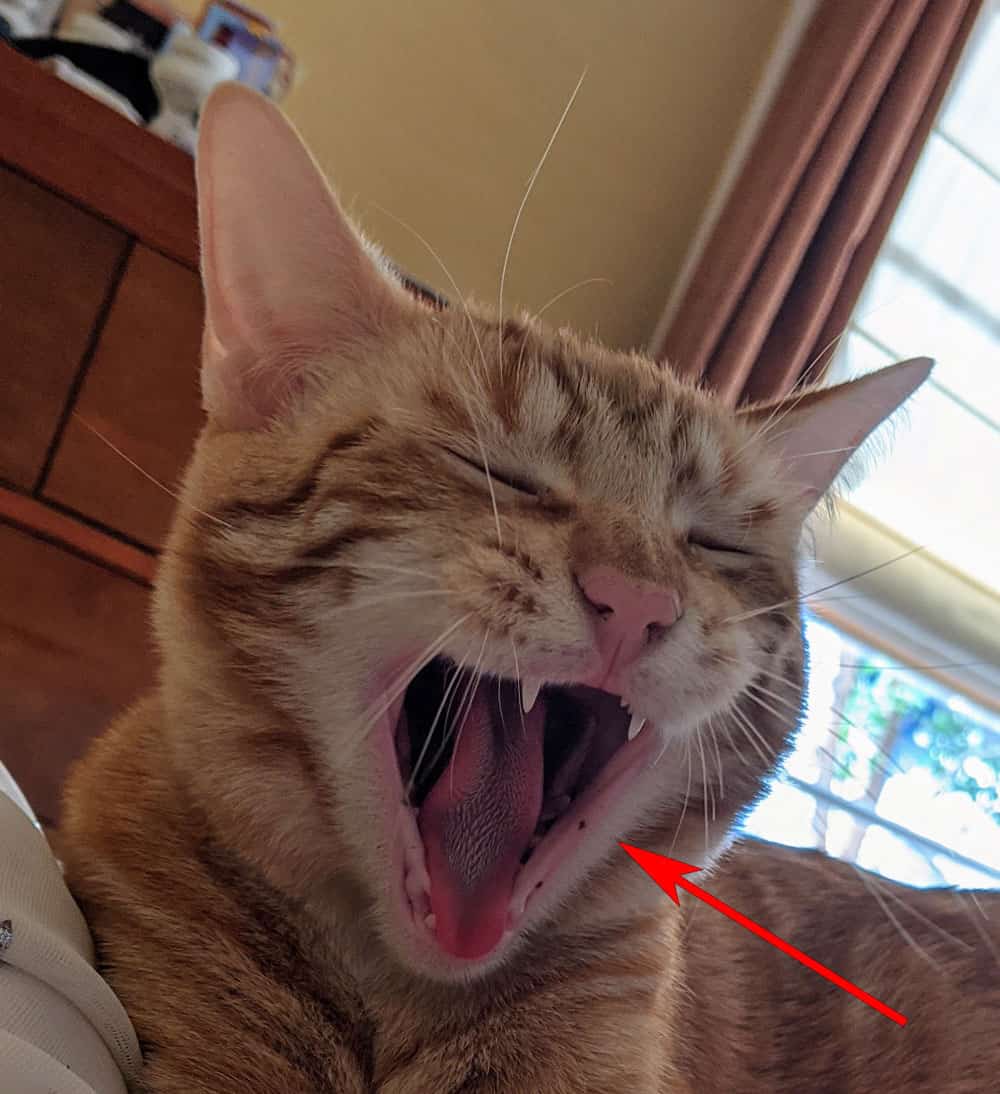
What Types of Breeds Produce Orange Tabbies?
Orange coats can be found in several breeds including Maine Coons.
Famous Orange Cats
The most famous orange cat is probably Garfield, the lasagna-loving cat featured in a comic strip developed by Jim Davis.
In the Harry Potter series, there is also a ginger cat named Crookshanks who belongs to the character Hermione Granger.
Winston Churchill was gifted an orange cat on his 88th birthday in November 1962. The cat, named Jock, became a favorite pet. After Churchill’s death, the family requested that an orange cat always remain in residence at Chartwell, which has been managed by the National Trust since 1966.
Dewey Readmore Books was an Illinois library cat from the little town of Spencer. Dewey was abandoned in Spencer in the 1980s, at the height of a financial crisis that had decimated the town and its neighboring areas. Vicki Myron saw the little kitten huddling for warmth in the library’s night drop box and took him in. The orange cat was named in honor of the decimal system used to classify books in libraries. Local residents and library visitors began to notice Dewey and would stop by just to see the friendly cat. A best selling book was written about Dewey.
The Vikings Loved Orange Tabbies
Vikings favored orange tabbies. As vikings traveled across the North Atlantic, they would selectively bring orange tabbies on the ships for rodent control (Todd, 1977). The presence of significant populations of orange cats in the area can be traced back to the arrival of vikings.
September 1 is Ginger Cat Appreciation Day
Celebrate the orange tabby in your life on September 1 each year which is Ginger Cat Appreciation Day.
References
Ridley, L. (n.d.). Is it true that most ginger cats are male? BBC Science Focus Magazine. https://www.sciencefocus.com/nature/is-it-true-that-most-ginger-cats-are-male/
Todd, N. B. (1977). Cats and commerce. Scientific American, 237(5), 100-107. https://www.jstor.org/stable/24953922
This article was originally written on July 15, 2021 and has since been updated.

